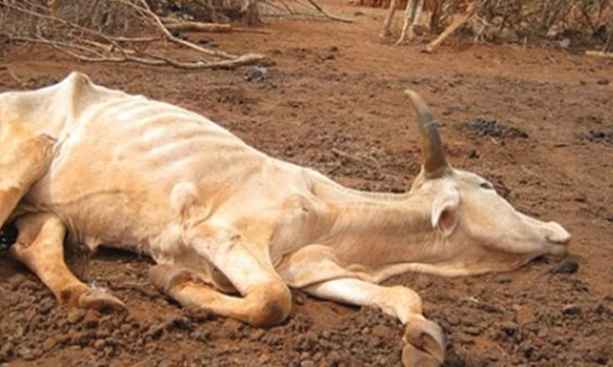Farmers in Ngamiland have expressed fear that they will lose most of their cattle if the drought situation worsens. Farmers are already counting loses as their cattle have been dying since October.
Looking up the sky for salvation has not borne any fruits as rains have been erratic. The Department of Meteorological Services projects that the period of January to April will see Western Parts of Ngamiland, Gantsi, Southern, Southeast, Kgatleng, Kweneng, North East and southern parts of the Central District having largely normal with a tendency to above normal rainfall.
Ngamiland farmers however decry that their situation is worse than predicted as rainfall experienced in the months of December and early January have not been received in some parts of North West region.
Zahepa Ndjarakana from Legothwana said a number of cattle around Lake Ngami area were dying due to thirst – most the cattle are weak and die while searching for water.
Ndjarakana – a member of Nama Agricultural Management Association (NAMA) – regretted that with Lake Ngami drying up, cattle in the area are forced to go far in search of water.
He estimated that 400 cattle have died in his area since October. He, however, acknowledged that the rains they experienced at the end of December and beginning of January have had a positive impact with grass having started growing in some areas.
He urged government to assist communal farmers around Lake Ngami by drilling a borehole for them to prevent cattle from crowding in one place for water.
Ndjarakana also pleaded with the government, through the Ministry of Agriculture provides low subsidy to farmers on the purchased through the Livestock Advisory Centres (LACs) and Botswana Agricultural Marketing Board.
Another farmer, Charles Madise said the drought situation continues to worsen every day in the absence of the rain. Madise said some parts of the North West region has experienced very little rainfall.
He said despite efforts made by the government to subsidize fodder, some critical components such as calves’ feed, goat growers are not included in the subsidy.
During the Southern African Regional Climate Outlook Forum (SARCOF) workshop review in Maun last year it was revealed that Southern Africa will receive erratic rainfall in the 2018/19 as the rainfall forecast shows a normal to below normal outlook in most parts of the region. The forecast shows potential risks to the agricultural sector, including limited water availability, poor grazing conditions, heat stress to crops and livestock as well as increased fires due to high temperatures.
